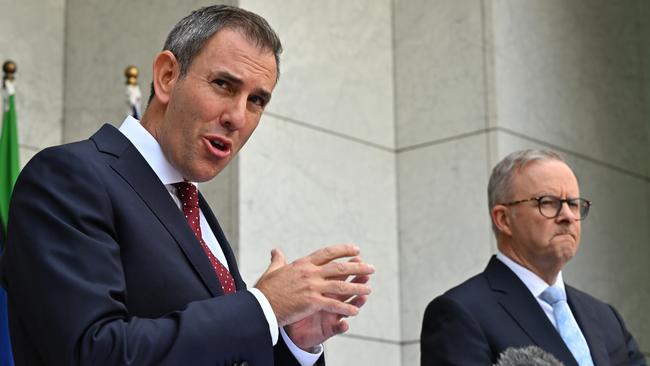
It was a common refrain: Australia has one of the best superannuation systems in the world. Admittedly, it was trotted out by those who benefited most from the system. We don’t hear it so often these days.
The revelation of stark weaknesses in the operation of the system, including inordinate delays in the processing of death and disability benefits by some industry funds, has sullied the reputation of the system. Question marks over the governance arrangements have had the same effect.
Super has been in the news a lot because of the government’s proposal to impose a 30 per cent tax on super balances of more than $3m. The key sticking points are the lack of indexation of the $3m figure and the inclusion of unrealised capital gains in the calculation.
But this change to the taxation of super – the Treasury Secretary would probably prefer the term “tweak” or “reform” – is just one of a very long list of changes to the regulation and taxation of superannuation that has characterised the system since the early 1990s. In fact, hardly a year has gone by in which there haven’t been changes. For a long-term asset in which the confidence of policyholders is critical, this is an astonishing feature. Australia should be immediately disqualified from receiving any prizes for our system of superannuation on this score alone. The fact no other country has sought to mimic our system is telling, although some have experimented with the model, only to ditch it.
It’s worth outlining some of the main weaknesses of our system of compulsory super. In this way, there might be some hope that useful reforms could be initiated that benefit superannuation members as opposed to those who make handsome livings from the system.
Let’s not forget compulsory superannuation had its origin in a hastily concluded deal in the early 1990s between the Labor government and the trade unions to forgo an increase in wages in exchange for an across-the-board 3 per cent contribution to superannuation.
None of the details had been worked out and there were no real rules related to taxation. But several trade union leaders quickly appreciated the benefits of having associated industry super funds, particularly because it was clear trade unionisation was falling.
The most sensible way to tax superannuation is to exempt contributions and earnings while taxing withdrawals at the full tax rates of members. This is a common arrangement overseas. In this way, the nest eggs of individual members are maximised and the reliance on the age pension can be significantly reduced.
Instead, an early decision was made to tax contributions and earnings at a fixed rate (15 per cent), with withdrawals tax-free – at least until the changes of 2016. The motivation was short-term: to generate revenue to repair the budget in the early 1990s. It was a ruinous error. What should have been a relatively simple system quickly became complex, including the imposition of so-called Reasonable Benefit Limits. On the face of it, the concept of RBLs seemed a good idea, restricting the size of an individual’s fund beyond which penalties would be imposed.
In practice, it was a shemozzle, with the Australian Taxation Office unable to make head nor tail of the rules. The small number of very large super accounts – it’s estimated there are about 25 with balances of more than $100m – were created under the RBL rules.
Replacing the RBLs with limits on contributions, both concessional and non-concessional, was deemed a better way of restricting the size of individual accounts. Under existing rules, it’s simply not possible for superannuation members to amass very large balances.
While the taxes on contributions and earnings are a drain on the final retirement balances that members can hope to achieve, the level of fees charged by the funds is also a significant contributor. The average fees charged on super investments is excessive by international standards. This reflects the relative lack of competition between funds. It also explains the popularity of self-managed super funds, given the control members have over the fees they accept.
The alignment of particular trade unions to industry super funds never made sense when it comes to the retirement needs of the members. Why would the retirement needs of a teacher be any different from the retirement needs of a bank teller or a gardener? The way industry super funds developed, with the co-operation of the associated employer groups, was all about generating influence and dollars rather than fitting in with a rational model to generate retirement incomes.
Some of the failings have become apparent in recent years. The so-called equal representation model is inconsistent with having the best-qualified trustees. Many industry funds have under-invested in their IT infrastructure. Outsourcing administration to third parties can be problematic. Sub-scale funds have hung on too long. Inappropriate spending on sponsorships and marketing has been largely ignored by the regulator, the Australian Prudential Regulation Authority, at least until recently. At the same time, many of the industry funds are too heavily invested in listed Australian equities. The trustees then throw their weight around by demanding standards of governance that many of the funds themselves do not meet, while interfering in corporate strategy as well as companies’ internal workings.
The boards of many listed Australian companies have become fearful of the industry funds and their amateurish suggestions and woke obsessions. It is not a surprise there has been a relative decline in listings on the Australian stock exchange, with a great deal of the action now in the private sphere. With the rate of the Superannuation Charge about to increase by 0.5 percentage points on July 1, to reach 12 per cent, it is surely time for the government to address some of the weaknesses of the system rather than press on with the crazy idea of imposing a tax penalty on large superannuation accounts, including the unworkable idea of taxing unrealised capital gains.
The fact is, 12 per cent is too high, but that figure suited the industry funds, and they got their way. Workers are being asked to forgo too much of current consumption to fund their retirement, which in many cases simply knocks off their full entitlement to the age pension. It’s a dud deal for many workers, particularly when the excessive fees are considered.
It’s time for a major rethink. There’s no doubt super has benefited some handsomely, but there are many weaknesses in the system that require remediation in the national interest. At the very least, the system needs massive simplification to eliminate the thicket of arcane complexity that currently characterises superannuation in Australia.






